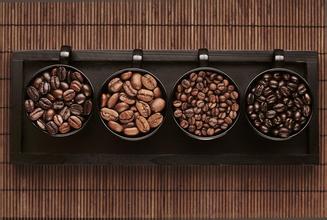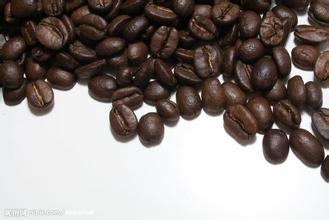The history of coffee, the spread of coffee, the source of coffee, the type of coffee.
Coffee enters Asia
The Arabs failed to spread coffee in Asia, but the Dutch did! In the process of colonization, they grew coffee in Malaba, India, and brought it to Batavia in what is now Java, Indonesia, in 1699. The Dutch colonies once became the main supplier of coffee in Europe. At present, Indonesia is the fourth largest coffee exporter in the world.
Coffee enters Europe
Venice merchants first brought coffee to Europe in 1615. By 1683, Europe's first coffee shop opened in Venice, and the most famous was the Floran Cafe, which opened in St. Mark's Square in 1720 and is still doing brisk business today. It is worth mentioning that London Lloyd, the world's largest insurer, started as a coffee shop.
Coffee enters America
Coffee became popular in South America as a fashionable drink in 1668, followed by coffee houses in New York, Philadelphia, Boston and other North American cities. The Boston Tea Party case of 1773 was planned in a coffee shop called Green Dragon. Today, both the New York Stock Exchange and the Bank of New York in the famous Wall Street financial district start in coffee shops. Coffee was first grown in America in the 1820s, and it was the Dutch who first spread coffee to Central and South America. Coffee spread from the Dutch colonies to French Guiana and Brazil, and then by the British to Jamaica. By 1925, growing coffee had become a tradition in Central and South America. In the same year, Hawaii also began to grow coffee, which is the only coffee producer in the United States, and Hawaiian coffee is one of the best coffee in the world. To date, Brazil is already the world's largest coffee producer, accounting for about 30 per cent of global coffee production, while Colombia is the second largest coffee producer, accounting for about 12 per cent of global coffee production. North America is currently the region with the largest consumption of coffee. In Seattle, "Latai" culture reinterprets the connotation of coffee culture, combining unique flavor coffee, beautifully designed coffee utensils with fashion and art, and sweeping the world.
Coffee enters China
According to historical records, coffee was first planted in Taiwan in 1884, which opened the prelude to the development of coffee in China. The earliest coffee cultivation in the mainland began in Yunnan, when a French missionary brought the first coffee seedlings to Binchuan County in Yunnan Province at the beginning of the 20th century. In the following nearly a hundred years, coffee was only "dotted" in the vast territory of China. However, in recent years, the development of coffee cultivation and consumption in China has attracted more and more attention of the world. Maxwell, Nestle, Colombia and other international coffee companies have set up branches or factories in China to provide better varieties and prices for the Chinese market. As a part of the western way of life, coffee has officially entered the Chinese family and life; cafes in Beijing, Shanghai, Guangzhou and other big cities have sprung up with the growth of coffee culture and become a new consumption fashion for young people, decorated with urban customs.

Important Notice :
前街咖啡 FrontStreet Coffee has moved to new addredd:
FrontStreet Coffee Address: 315,Donghua East Road,GuangZhou
Tel:020 38364473
- Prev

What are the ten world classic coffee-making methods? what are the coffee-making methods?
After drinking coffee, Turks always look at the traces of coffee powder left at the bottom of the coffee cup to understand the luck of the day from its appearance. Preparation method: pour the deep-fried coffee and cinnamon and other spices into the milk basin, stir well, then pour into the pan, add some water to boil 3 times, and remove from the fire. After the powder settles, pour the clear liquid into the cup and slowly add the orange.
- Next

The benefits of regular drinking Coffee can you lose weight effectively?
Drinking a cup of coffee a day is good for sugar: coffee beans contain about 8% sugar, and after roasting, most of the sugar is converted into caramel, making the coffee brown and combined with tannins to produce sweetness. Fiber: the fiber of raw beans will be carbonized after baking and combine with caramel to form the hue of coffee. Minerals: contains a small amount of lime, iron, phosphorus, carbon
Related
- Does Rose Summer choose Blue, Green or Red? Detailed explanation of Rose Summer Coffee plots and Classification in Panamanian Jade Manor
- What is the difference between the origin, producing area, processing plant, cooperative and manor of coffee beans?
- How fine does the espresso powder fit? how to grind the espresso?
- Sca coffee roasting degree color card coffee roasting degree 8 roasting color values what do you mean?
- The practice of lattes: how to make lattes at home
- Introduction to Indonesian Fine Coffee beans-- Java Coffee producing area of Indonesian Arabica Coffee
- How much will the flavor of light and medium roasted rose summer be expressed? What baking level is rose summer suitable for?
- Introduction to the characteristics of washing, sun-drying or wet-planing coffee commonly used in Mantenin, Indonesia
- Price characteristics of Arabica Coffee Bean Starbucks introduction to Manning Coffee Bean Taste producing area Variety Manor
- What is the authentic Yega flavor? What are the flavor characteristics of the really excellent Yejasuffi coffee beans?

